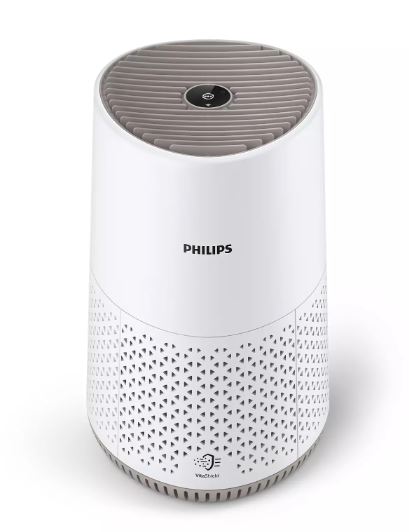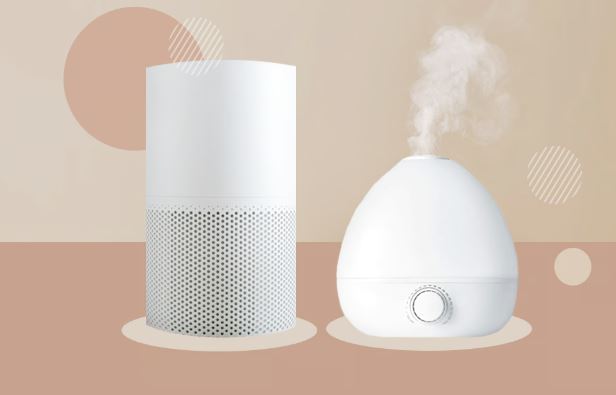In an era of heightened health awareness, the quality of the air we breathe has become a prominent focus for homeowners and health-conscious individuals. With rising pollution levels and a better understanding of the influence of indoor air quality on overall health on our health, it's no surprise that the air purifier market is booming.
Air purifiers are machines that remove contaminants from the air in a space, promoting healthier indoor air. They are ideal for individuals suffering from allergies, asthma, and respiratory conditions as they can drastically decrease the levels of allergens, pollutants, and irritants in the air. For those without respiratory concerns can take advantage of air purifiers, as they provide reassurance and safeguard against airborne diseases.
This guide will delve into the intriguing world of air purification, exploring their benefits, the array of models available, essential factors when choosing a purifier, and how to get the most out of your device. By the end, you should have a solid comprehension of air purifiers and be able to choose wisely about whether investing in one is the smart move for you and your family.

Understanding Air Pollutants and Their Influence on Health
To appreciate the value of air purifiers, it's key to comprehending the variety of contaminants they address and the potential consequences of exposure to these contaminants.
Indoor air pollutants can be broadly categorized into three main types:
- Particulate Contaminants: This includes solid particles and liquid droplets present in the air. Examples include smoke, dust, pollen, pet dander, and mold spores. Particulate matter can lead to respiratory complications and set off allergic responses.
- Understanding Volatile Organic Compounds: VOCs are gaseous compounds released from solids and liquids. Sources of VOCs include paints, cleaning products, aerosol sprays, and pesticides. Exposure to VOCs can lead to eye, nose, throat irritation, headaches, and stomach discomfort.
- Biological Contaminants: These include bacteria, viruses, mold, and mildew. They can cause a variety of health problems, from minor allergies to serious infections.
The effects of these pollutants on human health can vary significantly. For individuals with respiratory conditions or compromised immune systems, exposure to indoor air pollutants can lead to significant health complications. For those in good health, chronic exposure to certain pollutants can impact respiratory health and overall well-being over time.

Unraveling Air Purification Technology
Air purifiers use a range of physical and chemical mechanisms to trap and eliminate airborne pollutants. Understanding the basic mechanisms employed by purifiers will help you grasp how they work and the different types available on the market.
Here are the primary mechanisms and innovations used in air purifiers:
- The Power of Mechanical Filtration: This is the most common method used in air purifiers. It involves using filters to trap particles as air is drawn into the purifier. The filtration media varies, each designed to target specific particle sizes and types. For example:
- Pre-filters: The First Line of Defense: These are usually the initial barrier, trapping bigger contaminants like hair and dust.
- HEPA (High-Efficiency Particulate Air) filters: HEPA filters are highly effective at trapping tiny particles, including pollen, dust mites, and some bacteria and viruses. To be labeled a true HEPA filter, it must capture at least 99.97% of particles as small as 0.3 microns.
- charcoal filtration: These filters are designed to effectively remove odors, VOCs, and gaseous compounds.
- Ionizers: Charging Ahead: Ionizers use charged particles to create negatively charged ions, which bind to particles in the air. The particles become charged, causing them to stick to surfaces or the purifier.
- Ozone's Double-Edged Sword: Some air purifiers use ozone, a powerful oxidant, to break down pollutants. While effective, ozone is a respiratory irritant so these types of purifiers should be used with care and only when no one is present.
- UV Light: A Radiant Solution: UV light can be used to effectively eliminate bacteria, viruses, and mold. UV light and filters: a dynamic duo to eliminate particles, while UV light ensures any remaining biological contaminants are destroyed.
Choosing the Right Air Purifier
With a plethora of options available, selecting the perfect purifier can be a difficult decision. It's important to consider several factors to ensure you make the correct choice for your unique requirements and space.
Here are some key considerations:
- Sizing Up the Room: Air purifiers are typically rated for specific room sizes, so it's important to choose a model that can adequately cater to the room size. Most purifiers will list a maximum room coverage or CADR, which indicates the rate at which it can deliver clean air.
- Targeted Pollutants: Identify the particular contaminants you want to target. If you suffer from allergies, look for a purifier with a true HEPA filter. For eliminating odors, consider a model with a activated carbon filter. If you're concerned about bacteria and viruses, a purifier with UV light disinfection might be best.
- Whisper-quiet Performance: Air purifiers can produce varying levels of noise, so if you plan to use it in a bedroom or quiet space, look for models with a quiet mode for undisturbed rest.
- Maintaining Performance: Consider the regular maintenance and associated costs of the purifier. HEPA filters, for example, typically need to be replaced every 6-12 months, depending on use and environmental factors. Factor in the cost of replacement filters when making your choice.
- Additional Features: Many purifiers offer innovative smart capabilities like automatic modes, air quality monitoring, and wireless control, allowing convenient remote access and monitoring. These features can improve your purifier's performance and ease of use.
Maximizing the Benefits of Your Air Purifier
Once you've chosen and set up your air purifier, there are several things you can do to ensure it operates at maximum efficiency and delivers the maximum benefits:
- Strategic Positioning: Position your purifier in an unobstructed area, avoiding walls and furniture, to ensure efficient air circulation. Avoid placing it near external openings as drafts can interfere with its performance.
- Consistent Use: For the best results, it's recommended to run your purifier regularly. Many models have automatic or low-power settings that adapt to the air quality, so you can maintain healthy air quality while conserving energy.
- Regular Filter Care: Regularly check and replace filters as recommended by the manufacturer. Over time, filters become saturated with particles, affecting efficiency. Mark the date of replacement on your calendar so you don't forget.
- Reducing Indoor Contaminants: Alongside using an air purifier, take steps to limit indoor contaminants. This could include frequent dusting and vacuuming, opting for natural cleaning solutions, and reducing chemical or aerosol usage.